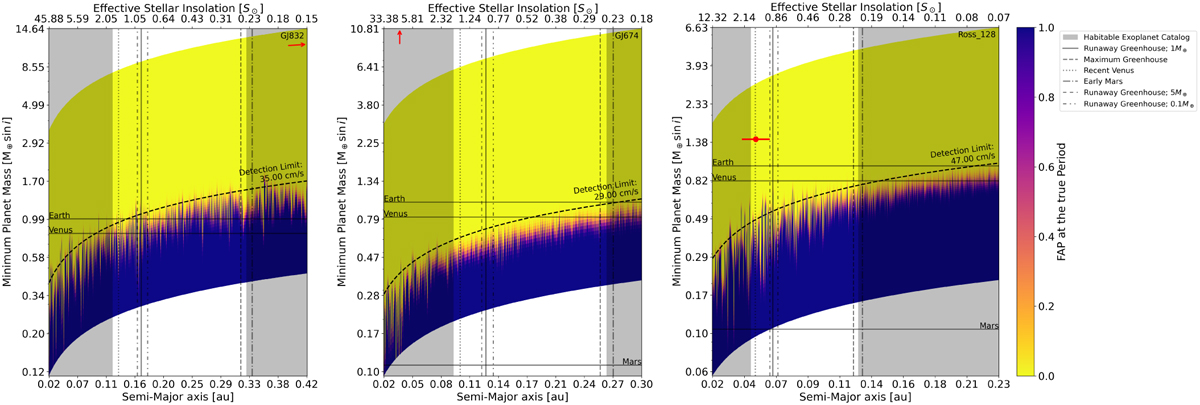Fig. 11

Download original image
GLS detection grids (Figs. 10, H.15, H.16, and H.19), transformed to the projected planet mass and semi-major axis for GJ 832 (left), GJ 674 (middle), and Ross 128 (right). The habitable zones, following the models of Kopparapu et al. (2013) and Kopparapu et al. (2014), are indicated by vertical lines with Earth, Venus, and Mars masses marked by horizontal lines. The shaded regions mark the habitable zone as defined for the Habitable Exoplanet Catalog (HEC). Ross 128b is indicated by the red marker, with the error bar indicating the orbital motion between periastron and apastron due to the orbital eccentricity of e=0.21 derived in this work. The location of GJ 832b and GJ 674 b are indicated by the red arrows. The curved, black, dashed line is the RV detection limit obtained in Sect. 5.3. The effective stellar insolation shown on the upper axis was calculated from the Kopparapu et al. relations.
Current usage metrics show cumulative count of Article Views (full-text article views including HTML views, PDF and ePub downloads, according to the available data) and Abstracts Views on Vision4Press platform.
Data correspond to usage on the plateform after 2015. The current usage metrics is available 48-96 hours after online publication and is updated daily on week days.
Initial download of the metrics may take a while.


